Malabar Chestnut – the Money Tree
In Taiwan money grows on trees. Perhaps not in the literal sense, but many inhabitants of the island believe and hope that the Malabar chestnut (Pachira aquatica), a symbol of prosperity and financial well-being, will provide them with wealth and economic fortunes they desire. Even though the tree is now commonly associated with feng-shui, a concept that is thousands of years old, the Malabar chestnut has only entered the teachings in the late nineties. In fact, the tree is not even native to Taiwan (or Asia for that matter); it comes from Central and South America where it is sometimes called “Guiana chestnut”, “provision tree”, “saba nut”, “shaving bush tree” or “water chestnut”. Today, however, it is a spectacularly popular tree throughout Taiwan – from people’s gardens and balconies to entrance halls of businesses and office blocks.
How did the tree become so prevalent and auspicious? Nobody knows for sure, but a legend says it was a result of a poor Taiwanese truck driver inventing, in 1986, the concept of “braiding” the young trunks of the Malabar chestnut, thus symbolically combining the five essential feng shui elements (metal, wood, fire, water and earth) into one attractive tree that became an instant success – not only in Taiwan, but also in Japan and other Asian countries. Apparently he became rich from growing and exporting the plant and this simple story is still entrenched in many people’s minds to this day. Among the Chinese the tree is now commonly referred to as “money tree” (錢樹) or “prosperity tree” (發財樹).
Botanically, the Malabar chestnut is a large tree that can reach 18 metres in height. It produces unusual flowers – long white petals, up to 15 centimetres long, ending with an orange stamen. After a day or two the white petals turn yellow so the tree gives an impression of having two-colour inflorescence. Eventually they will fall off the branches, as all flowers do. The larger trees will also produce edible nuts which grow inside hard woody pods. Once mature they will burst open and fall to the ground, scattering the golden brown nuts around. Although they don’t have a very strong taste, our pet cockatoos will readily munch on them and they can also be ground into flour to be added to a bread mixture. Here in Taiwan the tree seems to give fruit twice a year – in March and then again in July.
Below are a few pictures showing the fruit’s different stages of maturity. The last photo is a close-up of the nut’s texture – it is interesting to see how much its appearance resembles the crust of a freshly baked bread…
(This page has been viewed 1994 times.)
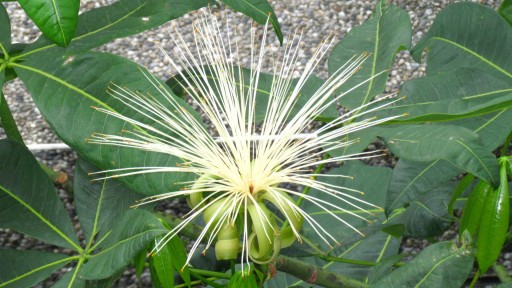
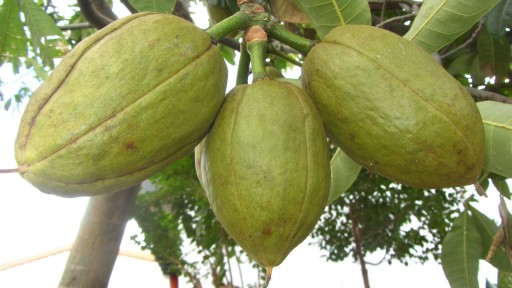
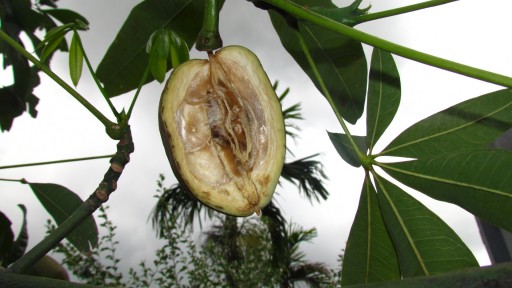
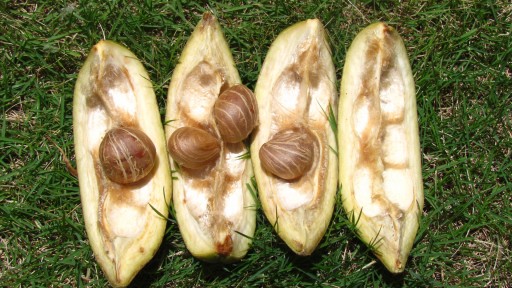
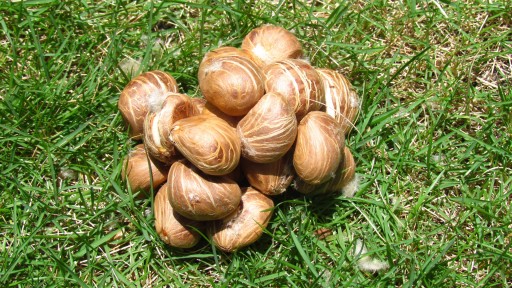
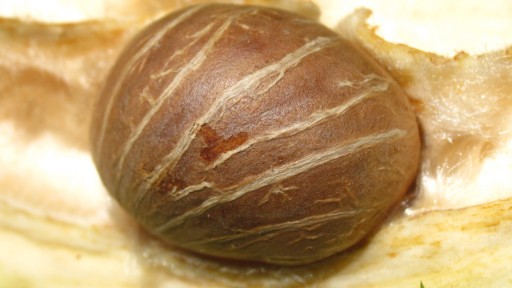
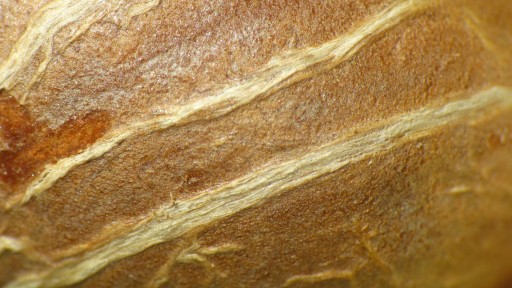
The species name is Latin for “aquatic”. It is classified in the subfamily Bombacoideae of the family Malvaceae. Previously it was assigned to Bombacaceae . The name “money tree” seems to refer to a story of its origin, where a poor man prayed for money, found this “odd” plant, took it home as an omen, and made money selling plants grown from its seeds.
how true that malabar chestnut is poisonous?
As far as I know, it isn’t poisonous. I ate the nuts in the past and I am still alive 🙂